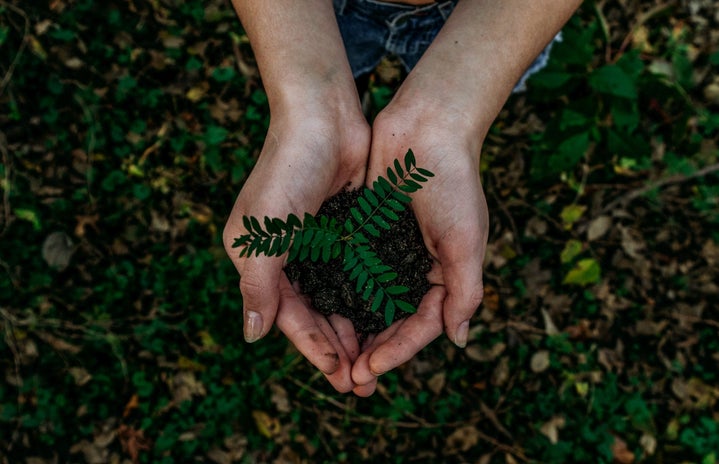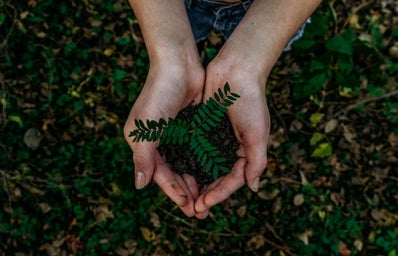Native Americans have relied on their environment to sustain their tribes and pass on their traditions for centuries. In Mary Koithan and Cynthia Farrell’s manuscript published in PubMed Central, they explain that traditional indigenous medicine — including native diets and native plants — has been used by millions of Native people who once inhabited this continent to promote their health and live harmoniously with the earth.
While Koithan and Farrell acknowledge the differences in traditions between individual tribes, the underlying principle of these traditions is the same: human life is derived from nature, and therefore entirely dependent on it. Thus, having a reverence for nature is necessary for any person seeking to live a healthy life.
The Native Americans also recognized that there would be dire consequences for those who did not recognize how intrinsic the health of the environment was to human well-being and prosperity. When the American government sent a treaty to Suquamish and Duwamish tribes with the intent of purchasing Native American land, Chief Seattle responded, “Whatever befalls the earth befalls the son of the earth. Man did not weave the web of life; he is merely a strand of it. Whatever he does to the web, he does to himself.”
Chief Seattle’s speech meant to warn the white settlers seeking to conquer and exploit the earth that their carelessness towards their environment would come back to not just them, but everyone. However, by the 19th century, the Native Americans and their important teachings were completely disregarded by the Americans who began occupying Native land, snuffing out their sacred way of life and learning to revere something else instead of nature — capitalism.
Capitalism, as defined by Rund Adbdelfatah and Ramtin Arablouei’s article for NPR, is more than an economic system. It’s an “all-encompassing force that rules over our lives and minds.” And while we readily acknowledge that its role in western prosperity is undeniable, we are not as willing to point out its greatest flaw.
The major problem with capitalism is that it reinforces a way of life that our planet cannot sustain. In his article for the World Economic Forum, Masaoud Movahed explains that “Capitalism requires endless growth of production in order to remain stable” and that production “is contingent on consumption,” and without consumption, the production cycle, and capitalism by extension, would be paralyzed. In this context, mass consumption (consumerism) is not just “a cultural phenomenon” but rather the “core [tenet] of capitalism as an economic system.”
Capitalism contradicts Native teachings, completely ignoring the warning that “what goes around, comes around.” So, what happens when we abandon centuries-old Native American customs in favor of a capitalistic economy? Well, catastrophic environmental degradation due to its incessant exploitation is one thing. The other? Disconnected citizens who feel detached from the life around them. A heightened adherence to individualism prevents people from recognizing their connectedness to Earth’s vast interspecies community.
While seeing the full extent of how capitalism can negatively impact us remains murky, the immediate consequences of unchecked environmental exploitation are clear and glaring. Observing these consequences is as simple as going outside and hearing silence because the birds aren’t singing or looking around and seeing weeds instead of wildflowers. There is a growing loss of biodiversity happening in California, and worldwide, due to human activity. Biologists are estimating that three-quarters of the known species are disappearing from the face of the earth and that we are currently in the midst of a sixth mass extinction.
While capitalism may not yet see the importance of preserving species biodiversity, if we’ve learned anything from the Native Americans, it’s that what bodes badly for the planet, bodes badly for us, though the consequences may not be apparent just yet. Still, many Americans have been lulled into a false sense of invincibility. We believe that our groundbreaking medical advancements have been achievable because of our capitalistic society that rewards technological advancement, and thus with this system in place, we can overcome anything.
Yet, it is a result of capitalism not working and previously helpful technology now harming us that we are currently battling against bacteria — and so far losing. It’s time for Americans to realize that capitalism and technology don’t always work in the ways we expect, and we certainly can’t rely on them to solve our gravest issues.
In the article “Capitalism has failed to produce the new antibiotics we need,” the author calls the discovery of antibiotics as chemicals to kill bacteria “one of the greatest success stories of modern medicine.” Before the 20th century, bacterial infections could be fatal, but Alexander Fleming’s miraculous discovery of penicillin allowed doctors to treat patients experiencing bacterial overgrowth by killing the bacteria and preventing death from these infections.
Unfortunately, viewing antibiotics as a miracle treatment has resulted in their overuse. The article details how after the course of antibiotic treatment, there can be a few surviving bacteria that were able to resist the antibiotic due to some mutation in their genome. They then go on to multiply and infect other people, spreading and strengthening their mutated genome, which now presents resistance to the antibiotic that could once kill them. A discovery considered to be among the greatest successes of mankind has now resulted in superbacteria that is becoming increasingly resistant to multiple antibiotics.
Well, while this technology can no longer help us, we can always rely on capitalism to encourage the discovery of a new technological fix, right? Not exactly. As a result of the overuse of antibiotics, the article states, “the antibiotic pipeline has run dry.” When all the “easy antibiotics” are “now known about,” it makes “developing new antibiotics a very unattractive commercial prospect for pharmaceutical companies.” Because we are now conscious of the “need to not overuse new antibiotics, sales would always be low.” Low sales mean low profit, which deters massive global companies who would rather invest their research budgets on “profitable ventures” such as drugs for chronic conditions.
So, what do we turn to when our current technology isn’t advanced enough to stop super bacteria, and life-saving research isn’t incentive enough for our capitalistic economy? We can turn to each other, and to the incredible plants and animals that exist around us. The article ends with a hopeful outlook on antibacterial research by introducing the proposal of “the public” not only funding “the research” but also funding the “whole process through the point of use.” If pharmaceutical companies can’t be depended on to initiate this important research, then the public should take charge and pay for antibiotic research and development.
Already, through funding provided by the United Arab Emirates University, scientists are identifying antibiotic substances in the skins of different frogs with the possibility for applications in medicine. In the research paper, “Frog skin may provide ‘kiss of death’ for antibiotic-resistant germs,” biochemist Michael Conlon states that the antibiotic substance found on frog skin works in a way so unusual that it makes it very difficult for disease-causing microbes to develop resistance.
The fact that some of the most promising antibiotics to counteract super bacteria are coming directly from an animal is not unusual, as most medications contain chemicals from animals or plants. While modern medicine prides itself on being much more sophisticated and research-based than Native medical practices, both practices share the same source of knowledge—nature.
The promising research still has ways to go, as scientists have begun screening skin secretions for antibiotic activity from only 200 of the 6,000 species of frog. The research, which has the potential to completely alter the issue of antibacterial resistance, faces a massive problem: nearly one-third of the amphibians are threatened or extinct.
Sooner or later, we are going to have to contend with the consequences of our failures to preserve Earth’s biodiversity
Among the species most affected by Earth’s declining biodiversity, frogs are one of the most impacted, and habitat loss is cited as one of the biggest contributors. Besides frogs, there are countless plants and animals that have yet to be studied with the potential to cure some of our most serious diseases and have the key to unlocking properties once thought unattainable to us, such as limb regeneration.
However, if we continue to blindly follow the tenets of capitalism, and ignore the customs of Native Americans teaching us to respect and protect nature, we could lose all our precious biodiversity and the potential for life-saving medical innovation with it. Sooner or later, we are going to have to contend with the consequences of our failures to preserve Earth’s biodiversity.
The Native Americans knew what so many of the most powerful and influential people within our country have still yet to grasp. That the planet, not man, is the source of life and respecting and healing our planet must be at the forefront of all our efforts to create a harmonious and healthy world.




